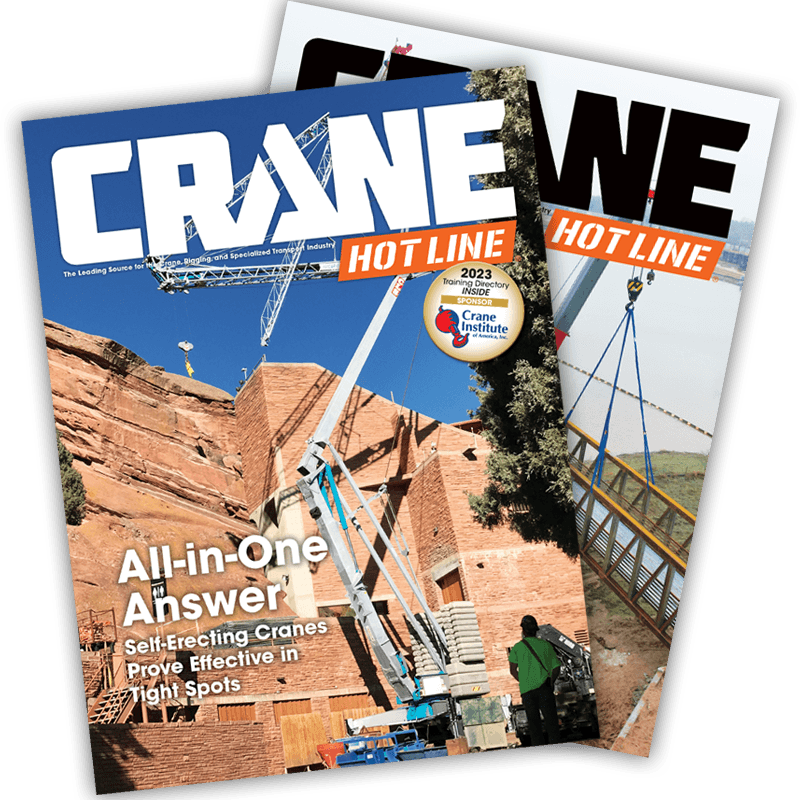Terex’s New 100-U.S.-ton Rough-Terrain Crane Proves Itself on Wind Farm Project
 |
| Enlarge Image |
September 19, 2018 - Lattice-boom crawler cranes typically steal the wind-turbine-installation show and with good reason. Rigged with wind-work packages, long booms, and heavy counterweight, they are the most visible part of the operation, called on to lift turbine components weighing up to 300 U.S. tons.
As with any show, however, much behind-the-scenes prep work must be completed in advance of wind turbine assembly, and those vital lifts are made by rugged and versatile rough-terrain cranes.
Even though that work doesn’t draw the notice and accolades that the big lifts get, it must be completed quickly, efficiently, and on time before the main lifting show can go on.
The venue this time for IEA Constructors Inc., of Indianapolis, specialists in wind energy, is the 81-turbine Upstream Wind Energy Center north of Neligh, Nebraska.
The facility’s 2.5 MW General Electric wind turbines will produce a total of 202.5 MW of electricity for households in Neligh and many surrounding communities.
But before any of the 186’-long blades makes a single rotation, work like ground preparation, concrete placement, and steel pedestal construction must be completed.
For Roger Galloway, crane assembly/disassembly director, and Mike Hedrick, crane operator, for IEA, that means non-stop work with their rough terrain cranes, placing cages of steel rebar in preparation for concrete pours. Their work helps build the foundations that anchor the massive towers to the earth and withstand considerable forces generated by the wind and turning blades.
On a project this size, IEA relies on a fleet of rough-terrain cranes to offload trucks and place steel. After operating all models at the jobsite, Hedrick, a 30-year crane operator, quickly noticed a difference in the power and performance of the new 100-U.S.-ton capacity Terex RT 100US crane, rented from Terex Cranes distributor, RTL Equipment, Grimes, Iowa.
Solid, Versatile, Powerful
Proper construction of the turbine base demands solid planning and orchestration. IEA starts by excavating an area roughly 90’ in diameter. The ground where the crane is working must be stabilized to handle the weight of the crane and its load. “The RT 100US crane has a small footprint, which means less ground prep work and less money spent on site preparation,” says Galloway.
Working in a tight six-hour window for installation, Hedrick uses the RT 100US to place rebar panels used to reinforce concrete. Each panel weighs up to 7,000 lbs. “A typical base construction job requires roughly 25 to 30 picks to place the material,” says Hedrick. “The Terex crane allows me to efficiently move the rebar panels into place and adjust the boom from 40’ to 100’, depending on where they are needed.”
The base’s primary reinforcing consists of a 13,000-lb. bolt cage that’s at the center of the rebar and filled with concrete.
While the controls allow Hedrick to quickly place the panels, the RT 100US’s newly integrated Demag IC-1 control system also gives him the ability to close the valve and dial-down swing function speed for more precise placement of the heavy bolt cage.
“Bringing together the Terex and Demag crane brands allows us to share and capitalize on the technological innovation of Demag and use it in the RT 100US,” explains Bryce Meier, regional business manager for Terex Cranes. “The IC-1 control system has been designed especially for ease of use in the rough terrain market.” According to Hedrick, the new control system helped him to quickly become familiar with the Terex RT 100US.
Hedrick positioned the 13,000-lb. cage at a 72’ radius with the boom telescoped to 104’. “We tried using a 130-US-ton capacity class crane to position the cage, but the RT 100US proved to be a better choice,” said Galloway.
After positioning all the pedestal steel, IEA’s crane operators move to another tower location to repeat the process. The company has four rough-terrain cranes and operators on site for base construction, and typically divides duties between rebar placement and finishing work once the concrete has cured. Sometimes, however, a dedicated rebar crane receives a call-back to finish off a tower base.
That can mean driving long distances back to a previous tower. “There is no wasted weight with the new RT100US crane design, and it roads very well fully rigged from,” says Galloway.
Within 10 minutes of reaching a tower site, the RT 100US is ready to get back to work.
According to Hedrick, he has driven the crane several miles to get back to a tower base for finishing. “The crane’s automatic transmission reaches speeds of nearly 20 mph, which allows it to quickly move between tower locations,” he says. “When I need some extra torque, I can quickly switch to manual drive to maneuver through mud or difficult terrain.”
On a site with multiple operators, each may need to run the RT 100US at different times. In that case, the new IC-1 control system helps save time. “The control system can store up to three pre-set operator profiles, so each operator’s preferences are quickly restored,” says Meier.
The new RT 100US’ many design improvements have helped the crane prove itself to Hedrick on the Upstream Wind Energy Center. “This one is a solid crane that offers a great load chart at extended boom length and radius,” he says.
Galloway adds, “Hats off to the engineers who listened to customer feedback and worked on the updates. This was probably the harshest setup and overall operating environment that the crane will face, and it passed with flying colors.”


